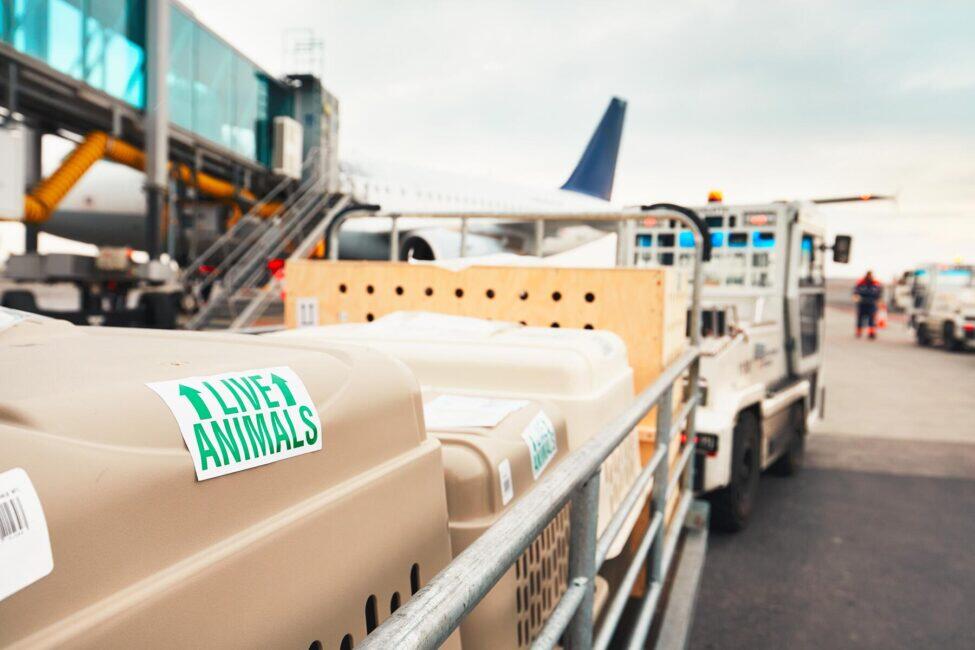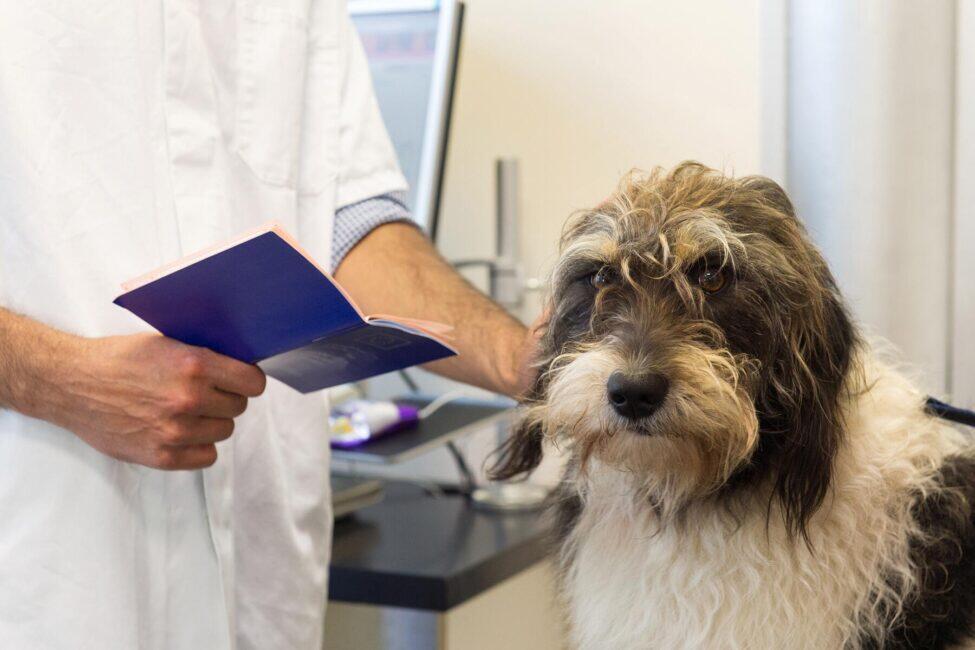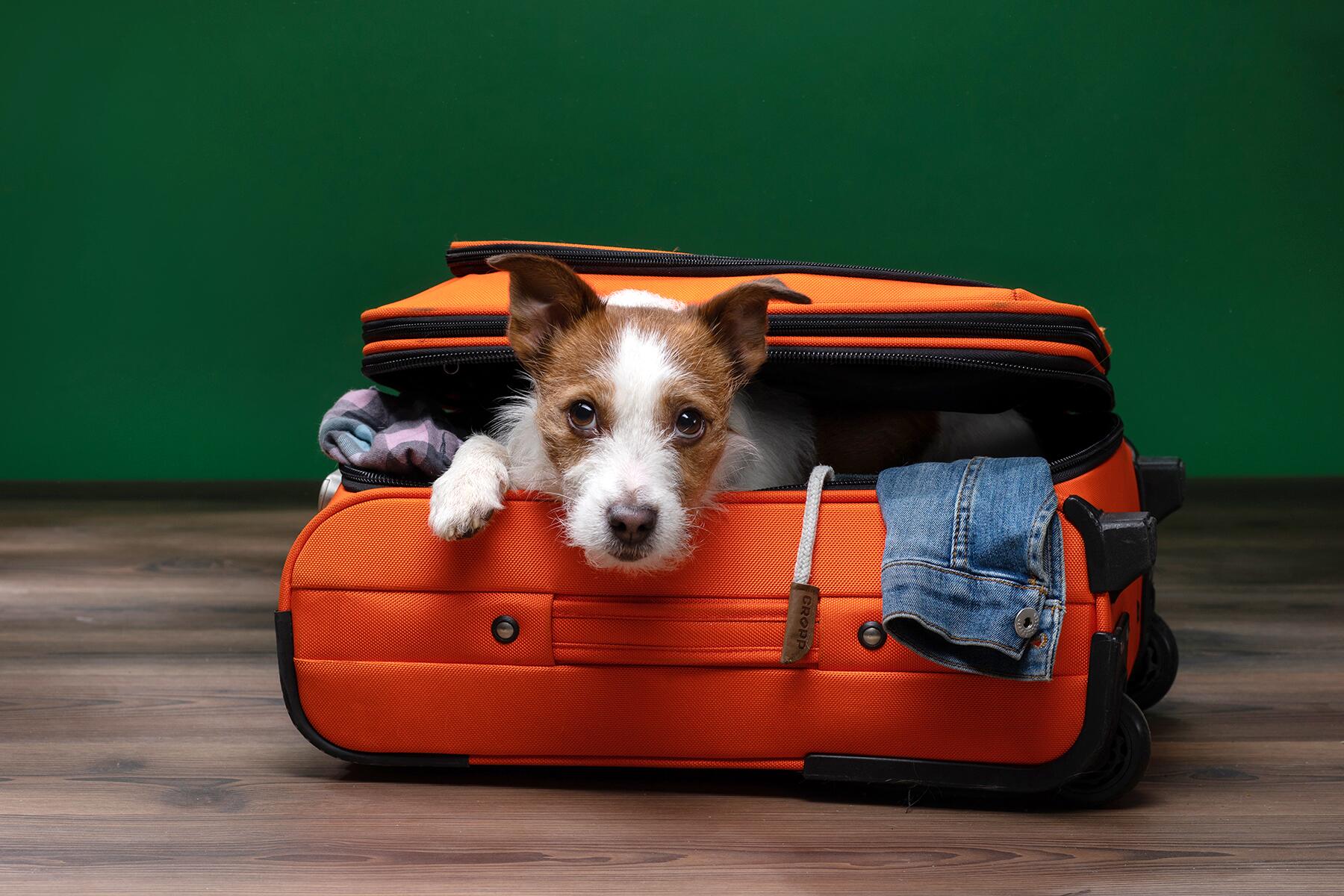It is complicated, but not impossible.
Pet adoptions soared in 2020 after the stay-at-home orders were issued in March. People brought home puppies and kittens to ward off loneliness and offer comfort to their families in stressful times. As folks begin to plan their travels again, it might be difficult to leave your furry companion behind. Besides, it’s a different experience to share the world with them, take them on an adventure, and rediscover a destination with them trotting along.
Reuniting with families, leaving for a long holiday abroad, or relocating to another country—your pet can be by your side. The process is complicated and may seem overwhelming, but we’ve broken it down for pet-parents and talked to those who have well-traveled pets themselves.
Can My Pet Travel With Me in the Cabin?
It depends on airline policies, but many domestic and international airlines allow small dogs and cats to travel onboard with you. Destinations and airlines have their own rules, and you should know them before you make concrete plans. You’ll have to dig in deeper to know if other household pets are allowed on board (including birds and rabbits).
JetBlue specifies that small dogs and cats may travel in the cabin in an FAA-approved pet carrier that fits comfortably under the seat in front of you. Only one pet per customer is allowed and the combined weight of your pet and the carrier must not exceed 20 pounds.
Recommended Fodor’s Video
Air France requires the pet to be at least 10 weeks old and weigh less than 17 pounds including the bag. The airline also requires vaccinations to permit pets on board.
Make sure you check your preferred airline and read their pet policy before making any arrangements. You can also call and ask if they have availability to accommodate your pet on the flight you’re booking for yourself. There is a pet fee and you should make your bookings early because there is a limit to how many pets a flight can carry.
According to a report by Veterinarians.org, Alaska Airlines is the most pet-friendly carrier in the U.S. with a high number of animal transfers and a low incident rate. The airline also has a low fee and flexible policies for pet transport.
Gayle Martz, a former airline host and creator of the SHERPA pet carrier, also recommends Delta Air Lines, Swiss Air, and Air Canada for travel with small pets. “Air Tahiti Nui is excellent from Los Angeles to Paris for small pets 10 pounds or less onboard,” she suggests.

What About Pets in Cargo? Will They Be Safe?
Unfortunately, large pets can’t travel in the cabin because they won’t fit under the seat in front of you. They have to be transported as cargo. A health certificate by a vet is a must. For international travel, other documentation will be needed. Depending on your flight, weather, and airline policy, your pet may or may not travel on the same flight as you. Some airlines also allow pets as checked baggage and you can also book a separate cargo transfer for your pet.
Pressure and temperature are controlled in the plane, but airlines won’t ship pets if the temperature is above 80-85 degrees Fahrenheit or below 20 degrees. If there’s a layover or a long delay, airlines will feed and water your pet (please make sure to tape food on the crate), and may even walk them. Make sure to inquire about these services beforehand and let the pilot know that there’s a pet in cargo (although this information is supplied already), so they double-check the temperature and pressure.
Some airlines don’t allow short-nosed dogs (pugs, boxers, Boston terriers, bulldogs, etc.) in the cargo at all because they are prone to respiratory difficulties. Many other species may also be banned. Airlines have a different check-in area and you’re asked to bring two bowls (food and water) for pets, give instructions for feeding and watering, and have your contact information clearly marked on the crate.
Sedating pets is not recommended by IATA. It states, “We do not encourage the use of sedatives and tranquilizers in animals being transported either in cabin or cargo hold due to the potential for adverse effects during transport.” The American Veterinary Medical Foundation also discourages sedation in most cases, but suggests a conversation with the vet to know if it’s needed.
Industry experts and pet parents will tell you that shipping your dog in cargo should be a last resort. It’s not a happy experience for pets and there have been stories of injuries and death of animals during freight travel. New environments and loud noises can cause distress, and during flights, the crew is not around to help or monitor an animal in the hold. You can use a pet relocation service if you’re moving to another country to help you with the process.

What Paperwork Do I Need?
There is a fair bit of research and work that goes into traveling with your pet. The Animal Welfare Act requires dogs and cats to be at least eight weeks old and weaned at least five days before travel, but destination rules vary. Most airlines will need a Certificate of Veterinary Inspection—it needs to indicate that your pet is healthy to travel and up-to-date with immunizations. There’s also a waiting period after vaccinations, so begin the process according to the timeline.
Different countries will ask you for more. Let’s take the European Union as an example. To be able to enter the 27 countries (and Northern Ireland and Norway), your pet needs to be vaccinated against rabies; it needs to be micro-chipped; it needs to have been treated against tapeworm, and it needs an EU health certificate. Australia has a very long list of requirements, including an import permit, a micro-chip, vaccinations, and mandatory 10-day quarantine. Failure to comply can cause more time in quarantine, testing, or euthanisia. Armenia, on the other hand, only requires a health certificate within five days of a pet’s travel.
It’s important to carefully understand requirements or your pet won’t be allowed to board. A good place to start is the APHIS website.
The carrier needs to meet the airline’s requirements, too. Martz, who often travels with her dogs, explains, “To be allowed onboard, your pet must be able to stand up and turn around in a pet carrier for them to be approved by the airline.”
Airlines also have specific rules about the age and breed of animals. You may also want to read about bringing your pet back into the U.S. Pets should be healthy in order to gain entry into the country. A valid U.S.-issued rabies vaccination certificate and proof of a microchip is necessary to bring your dog back from a high-risk for rabies country. It should also be at least six months old. Cats don’t need a rabies vaccine certificate to enter the country, but states and countries may have their own laws, so it’s better to get your feline friend vaccinated. The CDC website also specifies, “Some animals, such as primates (monkeys and apes) or African rodents, won’t be allowed back into the United States. Even if they originally came from the United States, they can’t be brought back here as pets.”

What Are the Most Pet-Friendly Countries in the World?
If you’re going on a vacation with your pet, you should pick a destination that will show your four-legged friend a good time. Does your pet need to be quarantined on arrival? Will you need to change flights to get there? Is the country generally friendly to your pet or breed? Will you need to keep your pet leashed outside or restricted to its crate when eating in restaurants? You should discuss these things with your vet and analyze your pet’s comfort (keeping in mind your pet’s reactions to long delays, layovers, loud noises, and new surroundings).
Europe comes up repeatedly when you ask pet parents about their favorite paw-friendly destinations. Martz picks France, Italy, Switzerland, and Germany. Jennifer Dombrowski, of Luxe Adventure Traveler, gushes about France, saying, “It is known to be the most dog-friendly country and dogs are welcome in many places from restaurants (both indoors and on terraces) to attractions. There are a wide range of hotels/accommodations from budget-friendly to the most luxurious that welcome pets.”
Choose a country in Europe and you’ll probably have a good time with your pawsome traveler. The UK is trickier because it doesn’t let you travel with your pet in the cabin (and lack of documents may lead to pet quarantine), but you can bring them in a car or by sea.
Dombrowski, who has been traveling with her dogs for two decades, moved her pets from the U.S. to Europe. She recounts that a mechanical issue left them in their crates for longer than anticipated and says, “In the future, especially for leisure travel, I’ll consider taking the Queen Mary 2 instead of flying. The cruise had pet kennels and a pet deck for daily walking and bathroom needs. It takes seven days and travels between the UK and NYC. While a longer journey, it’s more comfortable and less risky for pets who can’t travel in a cabin.”
If it’s a leisure trip, steer clear of Hawaii, Australia, New Zealand, and Iceland.
Considerations While Choosing Hotels
For one, they should allow your pet. Not many do. Hotels will have a nightly pet charge and you will have to keep them on leash in public areas. Some hotel chains have special menus for pets and even play areas. Pick a property that welcomes pets rather than just tolerates them. A good place to start your research is Bring Fido that lists pet-friendly hotels and vacation rentals and has a repository of restaurants, activities, and veterinarians on the website.
Mary-Alice Pomputius, who runs pet travel blog Dog Jaunt and travels with her Cavalier King Charles Spaniel, Chloe, advises seeking out hotels with less onerous fees. “We typically stay in apartments rather than hotels, and we leave them scrupulously clean, so we’ve always received our deposits back.”

How Expensive Is It to Travel With a Pet?
The costs can add up. Members’-only travel service Essentialist points out that the cost can range anywhere from a few hundred dollars to over $1,000.
Pet fees for airlines start at $125 one-way, but there are other things to consider, including vet bills, vaccinations, paperwork, crates or carriers that meet airline requirements, hotel/stay charges (pets cost more), and pet-friendly activities.
But all the planning and expense is absolutely worth it, says Pomputius. “Not only do we get to be with our darling dog, who’s a hoot and a comfort, we also get the benefit of the effect she has on other people. Particularly in NYC and Paris, places that have seen tourists come and go since God was young, being four feet behind a cheerful, adorable dog completely changes how you experience the city.”
Helpful Tips
- Essentialist recommends road or train travel where possible as it’s definitely the more pet-friendly option as opposed to sending them in the cargo hold of a plane.
- Flying is a stressful experience for animals, with too many stimuli and so many restrictions. If your pet is older, uncomfortable in a crate, too big to fit in the cabin, or too skittish to travel, it will be healthier for you to find a reputable doggie hotel or boarding house, or leave your pet home with a friend or family member or sitter.
- If you can afford the services, a private charter will be most comfortable for pet travel. Private jet company Air Charter Service recently flew a family relocating from the U.S. to Europe with 14 pets between 9 humans. The company also charters rescue animals and moved several hundred dogs for an animal rescue organization.
- Book direct flights, so your pet doesn’t have to stay restricted for longer than necessary. Avoid holiday travel and busy weekends.
- Make sure you pick the right carrier that meets the airline’s guidelines (size, strength, sanitation) and has ample ventilation. If the carrier doesn’t meet the requirements, it won’t be able to fly in the cabin.
- Your pet should have an id tag and keep an extra collar on you. Don’t forget to pack its food, medication, a spare collar, treats, and toys.
- You should walk your dog before and after your flight, and check with your vet about feeding. It is advised that your pet doesn’t travel on a full stomach, so four hours is usually a good time for its last feed. Water can be given right up until the flight. The CDC recommends that if you’re traveling with your pet in the cabin, check-in as late as possible. But if your pet is traveling as cargo, check-in early when it’s quieter and dimly-lit inside the hold.
- Clearly mark the kennel or carrier travel with the pet’s name and your name, phone number, and address. Also, carry all of their medical certificates and a photograph, which will make it easier to find it if it gets lost. Consider a micro-chip even if the destination doesn’t mandate it.
- It’s very important to get your pet used to their carrier. Start to train them to be comfortable weeks before your travel to reduce stress as much as possible. Keep in mind that your pet will need to be in its carrier at the airport and on the plane.
- Avoid flying in cargo in extreme temperatures. The plane may be temperature and pressure controlled, but there are risks to your pet’s health while loading, taxiing, storing, and in-transit.
- Mary-Alice Pomputius says, “If I had it all to do over again, I would train Puppy Chloe to use pee pads. Grown Chloe won’t go near them, no matter how persuasive we are. If she were accustomed to pee pads, we could handle long-haul flights (and unexpected tarmac delays) by blanketing the floor of the plane lavatory with pee pads. It’s a solution that only works if you really ensure that you’ve left the lavatory no worse than you found it, and it pretty much requires that you perch on top of the toilet lid, to give her space.”
- Identify pet-relief areas at both departure and arrival airports. Stretch your dog’s legs before and after the flight. If the pet is traveling in cargo, get to the pick-up location as fast as you can.
- While in another country, try to maintain the same schedule and feeding times. Make sure you have researched vets in the area before you arrive.





Having lived in several different European countries with a dog, I disagree that France is "known to be the most dog-friendly." Reason: unless the animal is small and in a carrier, it can't go on most forms of local public transportation. Example: Paris metro. OTOH, in Switzerland our dog happily rode on buses, trams, trains, funiculars etc across the country. Belgium is also more pet-friendly when it comes to local transport. I suggest Ms. Dombrowski talk to owners in European urban centers who have large dogs and who depend on public transportation. In Switzerland, it's common to see dogs of all sizes -- including large breeds like Bernese Mountain Dogs -- riding the local transportation network. This is not the case in France.